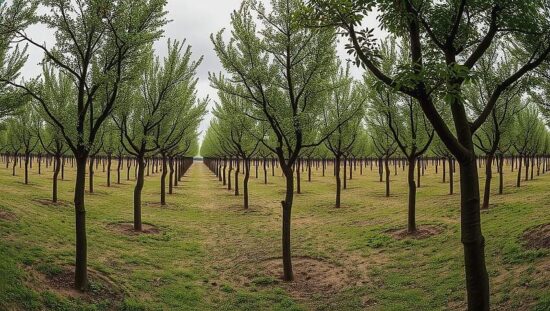“Germany’s Nursery Sector Faces Structural Decline Amidst Shifting Agricultural Landscape”
A new report from the Federal Statistical Office (Destatis) reveals a concerning trend of decline within Germany’s nursery sector, raising questions about the long-term viability of a vital segment of the nation’s agricultural economy. The data indicates a significant reduction in both the number of nurseries and the acreage they cultivate, suggesting structural challenges exacerbated by economic pressures and evolving market demands. In 2025, just 1,368 nurseries managed approximately 15,350 hectares of nursery land – a 10.9% decrease from 2021 and a stark 20.2% reduction compared to 7 years prior in 2017. The total area cultivated has shrunk by 10.5% since 2021 and 17.5% since 2017.
The nursery sector, which cultivates a diverse range of plants including ornamental shrubs and trees, hedging plants, forest stock, fruit trees, roses and conifers, exhibits a clear regional concentration. Lower Saxony remains the dominant region, hosting 346 nurseries on 4,060 hectares, representing over a quarter of Germany’s total nursery land. North Rhine-Westphalia and Schleswig-Holstein follow, highlighting the historical reliance on specific geographic areas for this agricultural activity.
While the overall decline is alarming, specific areas within the sector demonstrate nuanced shifts. Production for parks, avenues and streets – essential for urban greening and infrastructure projects – shows a paradoxical increase in cultivated area (16.3% since 2021) despite a decrease in the number of producing farms (9.3%). This suggests a consolidation of production, with fewer farms focusing on larger-scale tree propagation.
Conversely, the cultivation of ornamental shrubs and deciduous trees seems to be suffering, with both the number of farms and cultivated area shrinking substantially since 2021. This points towards possible changing consumer preferences, increasing competition from imported plants, or rising production costs rendering smaller-scale ornamental nurseries unsustainable.
The sector’s reliance on traditional open-air cultivation (97.8% of land) may also be a factor, leaving nurseries vulnerable to unpredictable weather patterns and disease outbreaks. The relatively low adoption of protected cultivation techniques (glasshouses or high-canopy structures, representing just 2.2% of total nursery area) could be limiting resilience and hindering productivity gains.
Looking ahead, policymakers and industry stakeholders face a critical juncture. The declining number of nurseries raises concerns about the long-term security of plant supply for both public and private landscapes. Supporting innovation in cultivation techniques, addressing rising production costs and exploring new market opportunities will be vital to ensuring the continued viability of Germany’s nursery sector and its contribution to the nation’s green infrastructure. The data underscores a potential need for targeted support programs to incentivize younger farmers to enter the industry and safeguard the skillset and expertise essential for maintaining Germany’s distinct horticultural heritage.





